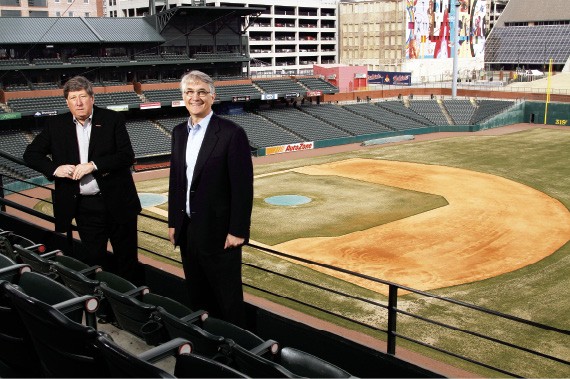This year marks the first of two annual celebrations of beer-brewing: The River City Brewers Festival will take place on March 13th at Handy Park in downtown Memphis and benefits St. Jude Children’s Research Hospital. The Memphis Brewfest will take place on April 24th at AutoZone Park and benefits Parent Project Muscular Dystrophy.
The River City festival will feature two sessions: session A from noon to 4 p.m. and session B from 6 to 10 p.m. Each session will offer samples of 75 different beers, seminars on the history and craft of beer, and an opportunity to meet with brewers (not just sales representatives) from breweries all over the country. There will be live music at 12:30 p.m. from the Mighty Electric St. Jude Band, a group made up of St. Jude doctors and employees, and at 6:30 p.m., Mudflap King will take the stage.
Why the sudden interest in brewing?
“We saw a significant increase in the demand for microbrews and craft beers in our bars, clubs, and restaurants,” says Christina Ramsey of River City Management Group, which is hosting the event. “So, we’ll have several types and flavors that aren’t normally available in the Memphis market. It will be a showcase of those beers.”
In addition to all that beer, the artist who designed the Blue Moon label will do a painting to be auctioned off. And the brewmaster from New Belgium will debut the company’s new line of seasonal beers at the festival. There also will be merchandise for sale, and all ticket holders will receive a souvenir mug.
Tickets are $30 per session. Go to the website rivercitybrewersfestival.com, or call 268-6439.
The Memphis Brewfest will offer beer lovers a second opportunity to taste-test and talk beer — this time with a focus on international beers. Martin Daniels, the event’s coordinator, is a longtime beer lover (he’s been to beer festivals from Denver, Colorado, to Athens, Georgia), and he is the father of a child with muscular dystrophy. So, starting a beer festival was an obvious choice to benefit Parent Project Muscular Dystrophy. He went to the Memphis Redbirds Foundation with his idea, and they decided to sponsor the event.
The festival will take place from 4 to 8 p.m. at AutoZone Park, with a performance by Patrick Dodd and Evolution and more than 95 kinds of beer from all over the world. The usual suspects will be there — Germany, Ireland, the Czech Republic — but expect to also see brews from Vietnam, Australia, and Japan. If you like to drink local, don’t worry: The Bluff City Brewers, the Homebrewer’s Association of Middle Mississippi, and local breweries such as Ghost River will offer samples. In addition, representatives from Anheuser-Busch will stage brewing demonstrations.
To help balance out a liquid dinner, stadium concessions also will be open for the festival. For future Brewfests, Daniels hopes to offer international foods to accompany the international beers.
Tickets are $32 before April 15th, $35 after April 15th, and $40 at the door. Contact memphisbrewfest.com.
A different kind of brew is percolating in Harbor Town. Café Eclectic has opened its second location in the downtown neighborhood.
Like the Vollintine-Evergreen location, the new Café Eclectic has illy brand coffee brewing all day and offers freshly baked treats made from scratch (delivered each day from the Midtown location). Plus, the free Wi-Fi and comfy seats are begging for students and walk-in traffic.
Rachel Boulden, daughter of Café Eclectic’s owner Cathy Boulden, is currently the manager of the Harbor Town location. According to Rachel, “We’re more of a coffee bar than a coffee shop.”
Which is to say the café doesn’t have a full kitchen, and you won’t find the extensive lunch and dinner menu of the Midtown location. But the baked goods are a strong pull — homemade donuts, cookies, pies, fresh breads, bagels, and paninis. The sign reads “More Coming Soon,” but considering the café opened only recently, the spread is impressive. Plus, they’ve already extended their hours. The café is open 6:30 a.m. to 9 p.m. Monday through Saturday and 7 a.m. to 3 p.m. on Sunday.




